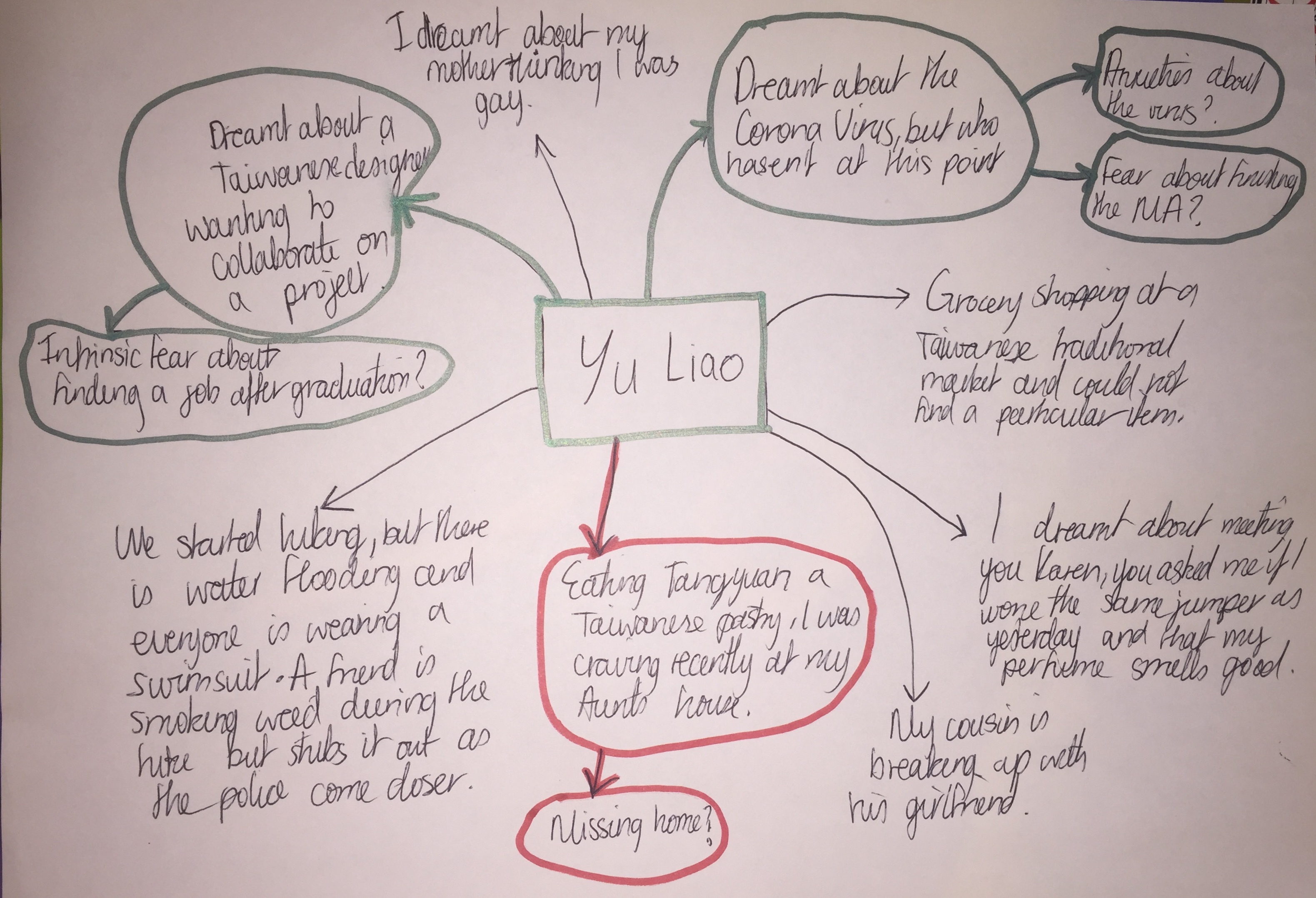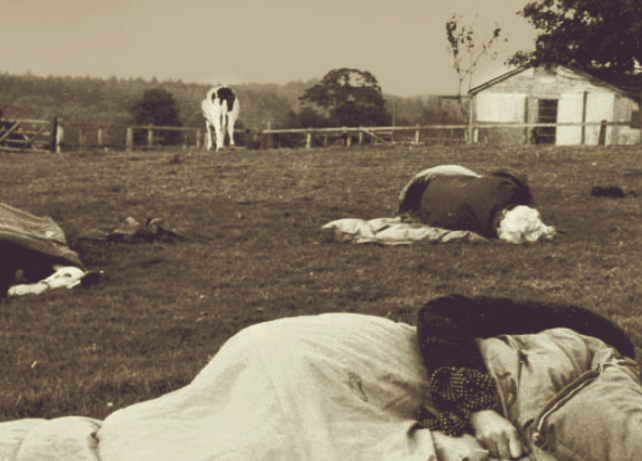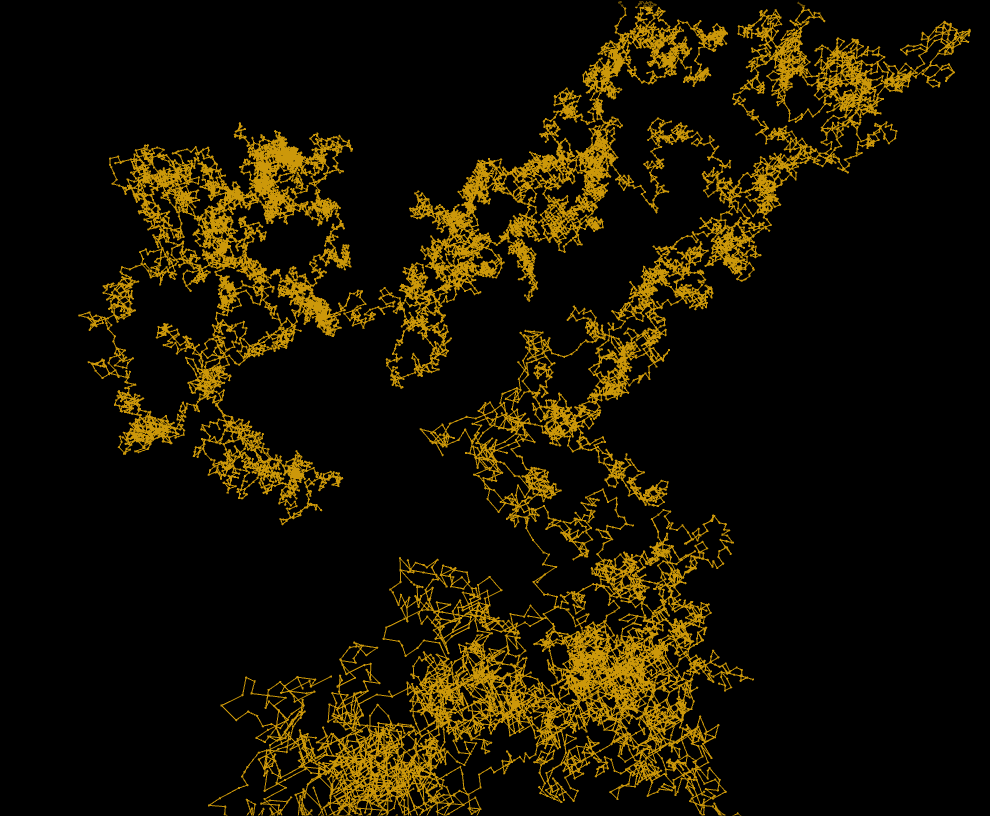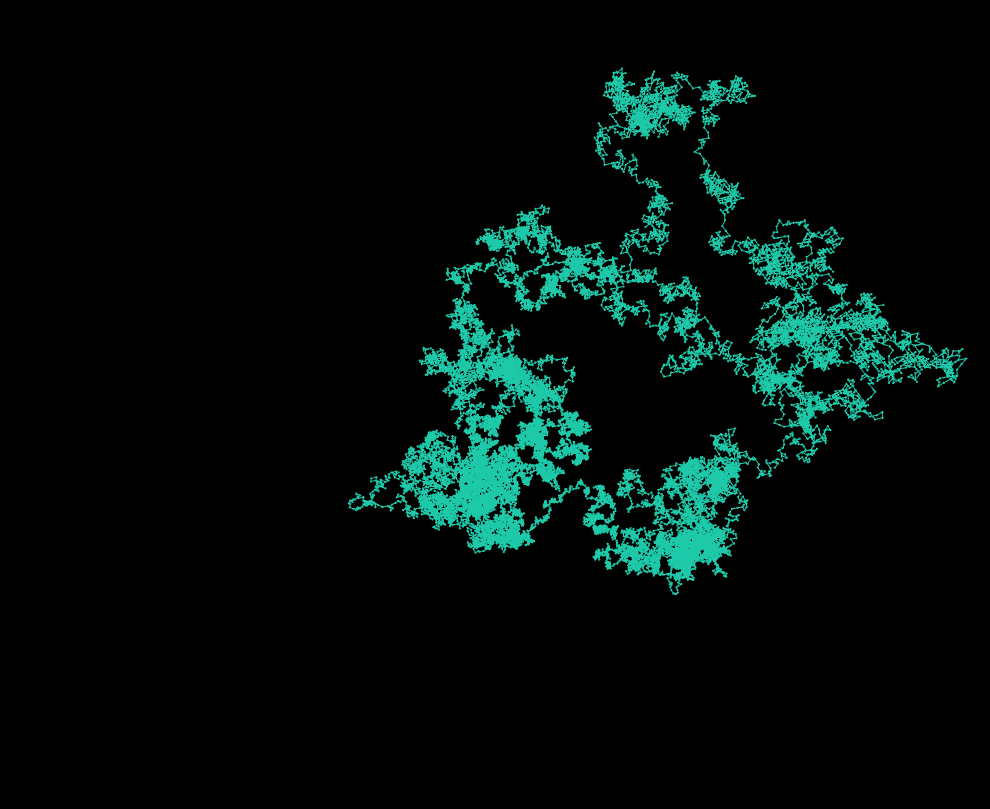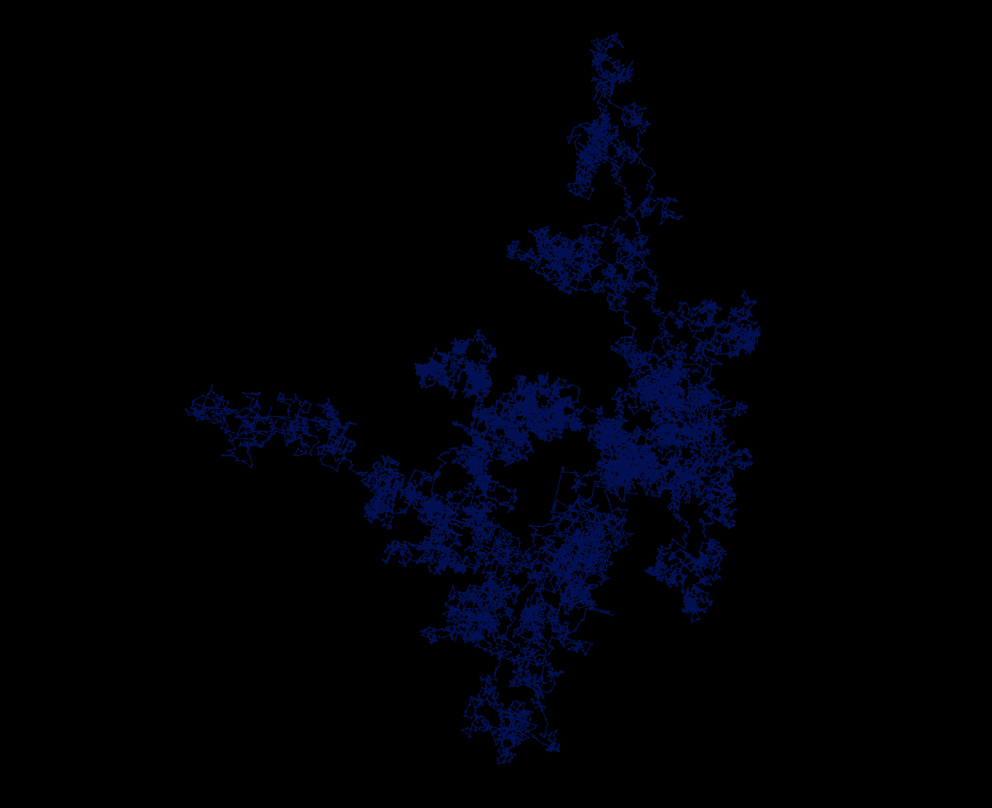If dreams be the gateway to the unconscious, dream on!
produced by: Karen Okpoti
"The dream shows the inner truth and reality as it really is, not as I conjecture it to be, not as he would like it to be, but as it actually is."
Carl Jung (1954)
Abstract
This research project delves deeper into oneirological research (study of dreams), psychoanalysis, surrealist depictions of the human psyche and the formulation of unconscious digital identities.
Several interpretations about the purpose of dreams have surfaced over the years. These range from scientific theories of brain processing and cognitive development, religious explanations, as well as psychoanalytic ideas of dreams being ‘a kind of nocturnal hug’ to release the pain of traumatic experiences. This research examines the ideas posed by Sigmund Freud and Carl Jung who have contributed much to the psychoanalytic discourse. The aim is to curate the dreamscape as an immersive multisensory experience which explores unconscious identities and dream-worlds. What would it be like to visualise, hear and feel our dreams during wakefulness, and what will this add to the current understanding of identity and the self. The project idea came quite naturally to me as I continuously question my conscious reality and how I identify myself. However, with limited understanding of the layers of my unconscious mind, perhaps I do not have a full understanding of my own identity.
Are dreams just a fancy word for unconscious psychoticism?
Many researchers claim that dreams are a time when we become mildly psychotic. During this period, individuals hallucinate and become delusional, seeing and believing things that are not true (Dumitrescu, 2019). While thinking critically about the purpose of the project and what this would add the already existing narrative of dream consciousness, ideas arose around transforming unconscious identities into a maximalist multisensory experience. Thus, identifying the imagery, physicality, emotionality and sounds depicted in dreams into a physical/virtual space. Therefore, the project combines the idea of the unconscious mind palace with pre-existing scientific models of dream and sleep cycles, weaving a web of entanglement between the identity in the waking and dream conscious.
The idea was also inspired by a friend who is aphantasic and does not see visual images in her mind's-eye. This raised questions about the experiential nature of dreams as a multisensory experience. Consequently, this research draws upon inspiration from surrealist artists and modern-day dream theories explaining the benefits of understanding the unconscious mind. The project and artefact incorporate elements within the dream/sleep cycles to recreate multisensory depictions of dreamscapes. Thereby, removes the restrictions of the physical body to enable dissection of symbols and imagery within dreams.
Conclusions about the unconscious mind and dreams have perplexed scientists and researchers for many years and yet there is still no definitive answer. However, it is important to understand the importance of dreams in computational creative practice when exploring different states of consciousness. This creates the potential of tailoring and controlling digital identities formulated by the unconscious to create utopic/dystopic worlds. However, a question can be raised, could there be exploitations of these creations and attempts to shift and control human behaviour?
Researching unconscious Identities
How do we define our unconscious identity in the physical or virtual space?
The project looks through the lens of digital ethnography. However, this highlights many hardships when studying the unconscious environment. This is due to the dichotomy of viewing individuals both as the object and subject of research as well as issues surrounding the subjectivity of the unconscious mind. Participants in this research permitted an external party into their mind. It was important to consider the multiplicities of this project and open the discourse about new ways of thinking, visualising and measuring the unconscious mind and the self (Pink et al, 2016). This also draws upon ideas of maximalism in combining unconscious depictions of true life events with emotionality, physicality, sounds and visual imagery within dreams to curate the ultimate ‘subconscious reality’ (Qianq, 2019). Individuals experience the dreamscape as an observer of their own unconscious mind.
Dream interpretation
Freud (1900) was a predominant theorist of psychoanalysis, and suggested that within dreams the egos defences are reduced, therefore, repressed material comes into awareness. An important area of interest for this project was the distinction between the manifest content of dreams (what a dreamer remembers) and the latent content, the symbolic meaning and underlying wish. The artefact incorporated these Ideas to create a dreamscape based on the collective symbols and imagery recollected by participants. Thus, there was a focus on condensation, the joining of two or more ideas/images into one. Displacement, transforming the person or object into someone else. Finally, secondary elaboration, where the unconscious mind strings together wish fulfilling images in a logical order of events (Freud, 1900). Jung however proposed that dreams were a natural expression of our imagination and formulate mythic narratives. Jung (1964) derives the term, collective unconscious as a vessel of symbols and imagery shared by all humans. However, Jung believed that currently there was too much emphasis on the traditional self and therefore the irrational has not been explored fully. This is manifested in the unconscious and can not be ignored. Humans have begun to disintegrate themselves, however, to find meaning and purpose, individuals must understand messages the unconscious sends though dreams.
Dream Mapping and Surrealism
Artist Susan Hillar (1973) conducted scientific and social experiments where participants slept for three nights inside ‘fairy rings’ composed of marasmius oreades mushrooms. The myth being to never step into the fairy ring, as those who join in to do the fairy dance in the circle under the moon are sometimes lost to time and may disappear forever. As participants awoke they were asked to create a collective dream map. This inspired the collection of dream audios for the artefact. Here, dream diaries from several participants were utilised to create a collective dream fiction. Other inspirations for this project were surrealist artists notoriously known for exploiting the unconscious for creative inspiration, such as Salvador Dali and Renee Magritte. Modern day computational artists have explored the boundaries of mixed reality technologies to bring traditional surrealist works to life. The Salvador Dali 360 experience recreates an immersive exploration of Dali’s painting “Archaeological Reminiscence of Millet’s Angelus”. Likewise, the Renee Magritte VR experience merges the identities of artist, artwork and participants. The artists use famous paintings, such as ‘The Treachery of Images’, ‘Golconda’, and ‘The False Mirror’ (BDH, 2017). Participants are immersed in a world filled with different landscapes.
Inspiration for the Artefact
Dreams of Dali: 360º Video. Created for The Dali Museum by Goodby Silverstein & Partners (2016)
Image 1 - Creating a dream map as an exercise in preparation for the artefact - dreams by Yu Liao. Image 2 - Susan Hillar dream mapping experiment (1973).
Stages of the Ultradian sleep/dream cycle
The average sleep cycle in the ultradian rhythm is 90 minutes. Therefore, the average person has approximately 5/6 sleep cycles and dreams roughly 4-6 times per night. However, due to amnesia upon awakening the majority of people do not remember their dreams. During this cycle, your body transitions through different stages. NREM sleep (non-rapid eye movement and REM sleep (rapid eye movement) (Morita et al,2012). NREM results in a reduction of physiological activity and is split into 3/4 stages. However, during REM sleep, brain activity is desynchronised and similar to relaxed wakefulness, with claims that this is where more vivid dreams occur. It is thought that content of dreams differ slightly within all of these stages. Individuals with sleep disorders may act out dreams physically during this stage (NIH, 2019).
Artefact
Creating an immersive environment to explore individual and collective unconscious identities in the physical/virtual space. This a prototype, as this project would be actualised using AR/VR technologies. The artefact is separated into 3 sections with different focal points and together create the building blocks of an immersive multisensory experience.
1. Visualising a dreamscape
2. Sonifying the dreamscape
3. Physicality of dreaming
1. Visualising a dreamscape
For this section of the artefact, much inspiration came from surrealist artworks, especially the Persistence of memory (Dali, 1931) and Golconda (Magritte, 1953). Therefore, bright, vivid and sometimes frantic colour gradients were used to create surreal depictions of objects. I began collecting audio dream diaries from various individuals asking them to recount their dreams as an audio message every morning when they woke up. Each object is inspired by imagery and symbols mentioned in the dream audios. Dream recollection varied as I also found that the pressure to remember dreams resulted in many participants forgetting them. Ideally a large sample was required to create individual dreamscapes. However, due to the low number of dreams collected all dreams were put together to create a large dream fiction. Symbols and imagery collectively created a visual concoction of different meanings, contexts and timeframes.
2. Sonifying a dreamscape
Throughout this project the sound of dreams was a big question and if this related to the identity of individuals at all. The focus here was on the continuous changes in brainwave patterns during different stages of sleep and dream cycles. In Openframeworks, I utilised different sound waves, such as sine, phasor and saw tooth and played with different functions and parameters to create different soundscapes based on average sleep data found online. I found it difficult to manipulate sounds using ofxMaxim, therefore kept the sounds generated one dimensional and simple. EEG’s capture 4 different types of brain waves, measured in cycles per second. Beta waves show a lot of variability. Alpha waves are slower, and have less amplitude and variability. Theta waves have a frequency and are greater in amplitude than alpha waves. Delta waves are the slowest waves with the highest amplitude and is the deepest sleep. During N1 brain waves and muscle activity begin to slow down. N2 is a period of light sleep, eye movements stop, brain waves become slower, heart rate slows and body temperature decreases. N3 / N4 is slow delta wave deep sleep. Rem sleep resembles relaxed wakefulness (NSF, 2019).
3. Physicality of dreaming
The final section was an audio-visual simulation of the physical sensations during REM sleep. This period is called rapid eye movement because the eyes move quickly in different directions, breathing rate, heart rate and blood pressure increase and several muscles become paralysed. It is beneficial to encapsulate the physiological processes within dreams when reimagining multisensory experiences, as this allows the individuals to ‘feel ‘what it would be like to experience the unconsciousness in a physical space. This stage is recreated as 4 cubes with each layer showing different physiological process. REM sleep, provides benefits for the brain as it begins to combine newly learnt information and memories learnt in the past. Therefore, deriving new insights from previously unsolved problems. Jung (1964) suggested that archetypal images that come through dreams may be derived from different organs and centres in the body and represent evolutionary drives, therefore, I wanted to explore the physical state of dreams.
I took inspiration from the Digital auto-ethnography workshop and created a list of questions to pose to participants after a multisensory unconscious experience such as this when actualised in VR or AR.
1. What are you feeling, seeing, hearing and touching in your dream world?
2. Where and what are the borders in the dream-world?
3. What is your maximal identity here?
4. Is this how you would have imagined your unconscious mind?
Technicalities of the artefact
Artefact part 1- Created a 3D surrealist environment in Blender. Models from turbosquid, free3D, sketchfab and model haven.
Artefact part 2 – Created in Openframeworks to create random walkers in 3D space where each walker had 26 options of movement in x, y, z directions based on a pseudo random algorithm. I utilised the audio out function to change the wave types, frequency and amplitude parameters to create soundscapes.
Artefact part 3 – Created in OpenFrameworks using sine and noise algorithms to create movement, textures and simulations of the cubes.
Future research and development
In future research, I hope to act as the guinea pig and delve into my own psyche as I was not able to remember many dreams during this project. Also, I am interested in using machine learning algorithms to create computer generated dream fictional stories based on an accumulation of dream content added to a database over time. Furthermore, I am interested in quantum theories of the multidimensionality of consciousness and also exploring the ideas of shamanism and religion. I would also like to expand on Freud’s caution about symbols. Stating that general symbols are more personal rather than universal, therefore, a person can not interpret the manifest content of dream symbols without knowing about the persons circumstances (Freud,1900). Consequently, deeper discussions with participants about their life experiences will increase the depth of research. Additionally, there are countless other dream theories not explored in this research such as processing-physiological function, activation-synthesis and cognitive development. I would like the explore these more in future projects. Finally, I hope to utilise VR/AR technologies to make these depictions come to life.
Special thanks
To those who let me into their unconscious mind and shared their dreams with me. Giulia Monterossa, Chloe Karnezis, Yu Liao, Mattia Spagnuolo, Chia Yang Chang, Melina Mitsotaki, Zoe Sibanda.
Annotated Bibliography
Sigmund, F. 1900. The interpretation of dreams.
The interpretation of dreams by Freud continues to shape much of psychoanalytic thinking in modern day research. Freud begins by describing the various dream theories that were formulated before his own. This book delves deeper into Freud’s understanding of dreams, where they come from and how they can be utilised to understand dreams as the fulfilment of a wish. Freud also introduces the theory of the Oedipus complex and psychosexual stages of development. Stating the importance of dream interpretation in contributing to human thought and human nature.
Jung, C, et,al.1964. Man And His Symbols.
Carl Jung is a Swiss psychiatrist and psychoanalyst and one of the most influential figures within this space. Jung introduced many of the most important concepts in psychology such as, individuation, archetypes, introversion, extraversion and synchronicity. The book aims to allow individuals to identify the most profound aspects of their personality. Jung makes the distinction between signs and symbols as signs denote objects and attachment and symbols are terms, images and names. Jung proposed that dreams communicate with us through symbols, though these are not easy to understand. Stating that dreams provide useful information for those who take the time to understand the symbolism embedded within them.
Dali, S., 1942. Secret Life of Salvador Dali.
Salvador Dali is a pioneer of the surrealist art movement and a controversial figure and this was his early autobiography. Dali projected subconscious imagery into paintings referring to them as hand painted dream photographs. The chapters permit a glimpse into the mind that created nightmarish landscapes, designed theatre sets, created jewellery and formulated films. This autobiography was a big inspiration for the artefact.
Ninds.nih.gov. 2020. Brain Basics: Understanding Sleep | National Institute Of Neurological Disorders And Stroke. [online] Available at:
This article explains the basics of sleep as a whole including the anatomy of sleep, sleep stages, sleep mechanisms, and dreaming. The author explains the necessity of sleep to maintain pathways in the brain vital for learning and creating new memories. Furthermore, explaining the sleep stages, NREM and REM sleep cycles each linked to specific brain waves and neuronal activity. This paves way to the scientific understanding of dreams as way to help individuals process memories and emotions.
Technical References
Chelli, A. 2014. https://github.com/AleChelli/oF_Project/tree/master/Random3D/src [Accessed 27 April 2020].
Conceptual and theoretical References
BDH. 2020. Magritte VR – Immersive – BDH. [online]
The Dali Museum., 2012. https://thedali.org/exhibit/dreams-of-dali-in-virtual-reality/. [online].[Accessed 2 May 2020].
Digital auto - ethnography workshop,2020.
Dumitrescu, M., 2019. Revealing the Unconscious through Dreams in Sigmund Freud’s Psychoanalysis.
Hemmer, N. et Al 2020. Five Theses On Virtual Reality And Sociality - Public Seminar. [online] Public Seminar.
Jung, C. G et al.1954, The Practice Of Psychotherapy.
Pink, Sarah et al, 2016. Digital Ethnography.
Purves, D., Augustine, G., Fitzpatrick, D., Katz, L., LaMantia, A., McNamara, J. and Williams, S., 2020. Stages Of Sleep. [online] Ncbi.nlm.nih.gov.
Qiang, P.J. 2019. https://jiadongqiang.co.uk/archive/tagged/npc
Salvador Dalí Museum. 2020. Dreams Of Dalí In Virtual Reality - Salvador Dalí Museum. [online].
Sleepdisorders.sleepfoundation.org. 2020. Stages Of Human Sleep - Sleep Ebook. [online]
Susan Hiller. 2020. Susanhiller.org.[online].































































